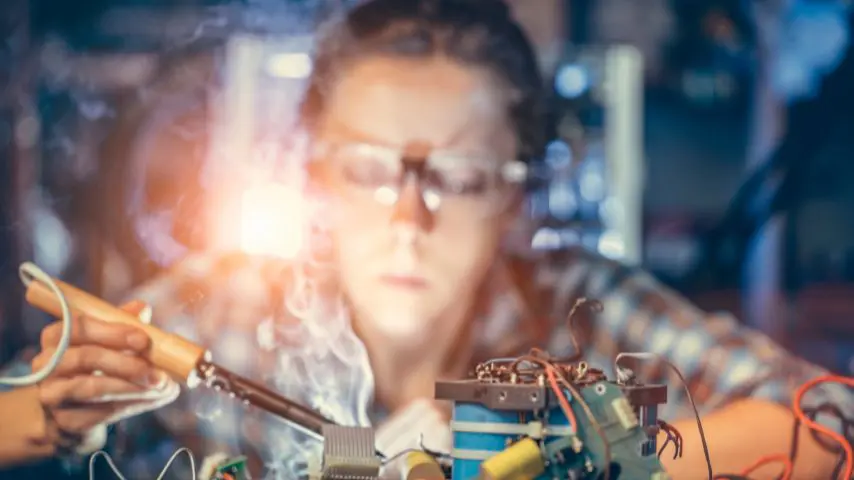6 Questions with Protolabs CEO Vicki Holt
6 Questions with Protolabs CEO Vicki Holt


The CEO of Protolabs, Vicki Holt, provides insights into the digital transformation of manufacturing and how companies can prepare for this rapid transition accelerated by the pandemic.
Vicki Holt has almost 40 years of experience in world-class manufacturing companies in various executive roles. She currently serves as president and CEO of Protolabs, an online and technology-enabled quick-turn manufacturer of custom parts for prototyping and short run production. Prior to joining Protolabs, Holt served as president and CEO of Spartech Corporation. She is also is a member of the board of directors of the National Association of Manufacturers, Waste Management, Inc., Piper Sandler, Watlow, Minnesota Business Partners, and Dunwoody College of Technology.
Q1: Under your leadership Protolabs has built an all-digital manufacturing business model. Can you tell us more about your vision?
Vicki Holt: When I joined Proto Labs in 2014, we had already begun the journey of digitization. It is actually how the company was founded. The founder Larry Lucas was incredibly frustrated with how long it took him to get custom injection molded parts for his prototypes. He was an inventor. So what he did is he took a look at injection molding and all of the front-end nonrecurring engineering that are associated with it and automated it with software, and coupled that with a very powerful e-commerce solution.
Q2: The impact of the coronavirus has made digital transformation a high priority for most organizations. What are some of the skills young engineers will need to succeed?
V.H: When you look at a company that excels in digitization, one of the things that is absolutely critical is collaboration. Not only do the young people entering this space need to embracing technology, but we also have to make sure that we are developing all the skills necessary to collaborate with each other across different functions, across different parts of the company, in order to deliver these truly connected digital solutions.
Q3: The manufacturing industry is changing with the increased adoption of digital tools. How can companies prepare the current workforce for this transition and future?
V.H: I always tell people what’s so important is continuous learning. It’s all about making sure that your organization stays abreast of the latest technologies and tools that are out there in software. You can’t be complacent on that as it takes hard work, because there are developments taking place every single day in this space. So you have got not only the new software tools that are being developed that are you going to be able to use to bring additional value to your business, but you have got tools like machine learning and artificial intelligence and the use of algorithms in order to drive insights. All of those are things that you have to make sure your organization stays educated on.
Q4: Where do you see this digital transformation leading the manufacturing industry in the next decade?
V.H: We are in a really exciting place. Digitization has been occurring for some time, but I do believe, there is an acceleration that’s taking place as a result of the pandemic, as we all realize that technology is something that can really make our jobs easier in these tough environments. So there are a couple areas that I see some trends that are going to accelerate. One is around fortifying our supply chains. The manufacturing community is learning that B2B digital solutions in their supply chain can give them flexibility in what can be uncertain supply chains or disruptions that occur in supply chain.
Recommended for You: Building the Versatile Test Reactor with Digital Engineering Tools
I think digitization is going to be one of those options that helps them. The other trend that I see continuing is B2B e-commerce. Prior to the pandemic, only about 5.7% of transactions of revenue in a B2B manufacturing world took place over true e-commerce. I think what we are learning through this pandemic is that e-commerce can really provide supply chain managers and operation leaders with opportunities to streamline the procurement process.
Q5: What are some of those issues manufacturing is facing and what can be done to resolve them?
V.H: So one of the biggest issues is workforce development. Clearly, there is going to be a demand for more and more talent into manufacturing as this Industry 4.0 revolution continues and we need to be able to attract and develop that talent into manufacturing. This means STEM education across our workforce to make sure that people have the skills to move into manufacturing type careers. But it also means making sure that we ensure that the public understands that we don’t make things the way we used to. Modern manufacturing today is high technology, so we have got to be able to attract the software engineers and the talent into manufacturing. It’s not a dirty, dark place anymore. It is hi-tech, uses the latest software technologies and tools and robotics, and it’s a very exciting place to work. So we have to change the image of manufacturing and we also have to make sure we have got the right STEM education and development for our young people to enter into the manufacturing world.
V.H: I have been incredibly blessed through my career with so many strong mentors and people that I could learn from. I have not viewed that I have been held back at all as a result of being a woman. I just lean into the opportunities that I have to learn from others. And as I mentioned before, if you are a continuous learner, I don’t think there are gender obstacles for us in manufacturing. I think that manufacturing community embraces the diversity that we have with all the people we have, whether it be gender or race, ethnic backgrounds, or just their thought process, and it's an opportunity for all of us to excel.
Chitra Sethi is executive editor, media.
Listen to the full interview with Vicki Holt in an episode of our podcast series ASME TechCast.
Q1: Under your leadership Protolabs has built an all-digital manufacturing business model. Can you tell us more about your vision?
Vicki Holt: When I joined Proto Labs in 2014, we had already begun the journey of digitization. It is actually how the company was founded. The founder Larry Lucas was incredibly frustrated with how long it took him to get custom injection molded parts for his prototypes. He was an inventor. So what he did is he took a look at injection molding and all of the front-end nonrecurring engineering that are associated with it and automated it with software, and coupled that with a very powerful e-commerce solution.
Q2: The impact of the coronavirus has made digital transformation a high priority for most organizations. What are some of the skills young engineers will need to succeed?
V.H: When you look at a company that excels in digitization, one of the things that is absolutely critical is collaboration. Not only do the young people entering this space need to embracing technology, but we also have to make sure that we are developing all the skills necessary to collaborate with each other across different functions, across different parts of the company, in order to deliver these truly connected digital solutions.
Q3: The manufacturing industry is changing with the increased adoption of digital tools. How can companies prepare the current workforce for this transition and future?
V.H: I always tell people what’s so important is continuous learning. It’s all about making sure that your organization stays abreast of the latest technologies and tools that are out there in software. You can’t be complacent on that as it takes hard work, because there are developments taking place every single day in this space. So you have got not only the new software tools that are being developed that are you going to be able to use to bring additional value to your business, but you have got tools like machine learning and artificial intelligence and the use of algorithms in order to drive insights. All of those are things that you have to make sure your organization stays educated on.
Q4: Where do you see this digital transformation leading the manufacturing industry in the next decade?
V.H: We are in a really exciting place. Digitization has been occurring for some time, but I do believe, there is an acceleration that’s taking place as a result of the pandemic, as we all realize that technology is something that can really make our jobs easier in these tough environments. So there are a couple areas that I see some trends that are going to accelerate. One is around fortifying our supply chains. The manufacturing community is learning that B2B digital solutions in their supply chain can give them flexibility in what can be uncertain supply chains or disruptions that occur in supply chain.
Recommended for You: Building the Versatile Test Reactor with Digital Engineering Tools
I think digitization is going to be one of those options that helps them. The other trend that I see continuing is B2B e-commerce. Prior to the pandemic, only about 5.7% of transactions of revenue in a B2B manufacturing world took place over true e-commerce. I think what we are learning through this pandemic is that e-commerce can really provide supply chain managers and operation leaders with opportunities to streamline the procurement process.
Q5: What are some of those issues manufacturing is facing and what can be done to resolve them?
V.H: So one of the biggest issues is workforce development. Clearly, there is going to be a demand for more and more talent into manufacturing as this Industry 4.0 revolution continues and we need to be able to attract and develop that talent into manufacturing. This means STEM education across our workforce to make sure that people have the skills to move into manufacturing type careers. But it also means making sure that we ensure that the public understands that we don’t make things the way we used to. Modern manufacturing today is high technology, so we have got to be able to attract the software engineers and the talent into manufacturing. It’s not a dirty, dark place anymore. It is hi-tech, uses the latest software technologies and tools and robotics, and it’s a very exciting place to work. So we have to change the image of manufacturing and we also have to make sure we have got the right STEM education and development for our young people to enter into the manufacturing world.
Recommended for You: 10 Influential Women in Engineering
Q6: What have been some of the challenges you have faced being a woman CEO in a space dominated by men? What advice do you have for other women who want to pursue your profession?V.H: I have been incredibly blessed through my career with so many strong mentors and people that I could learn from. I have not viewed that I have been held back at all as a result of being a woman. I just lean into the opportunities that I have to learn from others. And as I mentioned before, if you are a continuous learner, I don’t think there are gender obstacles for us in manufacturing. I think that manufacturing community embraces the diversity that we have with all the people we have, whether it be gender or race, ethnic backgrounds, or just their thought process, and it's an opportunity for all of us to excel.
Chitra Sethi is executive editor, media.
Listen to the full interview with Vicki Holt in an episode of our podcast series ASME TechCast.



